Per Chris Grinter, in July 25th, 2011 Quia non sum Arctiinae Monday quod prorsus aliud a consuetis – in microlep! Hoc est a Nepticulidae, Stigmella diffasciae, et mensus est eam in a whopping 6 mm. Non possum accipere gloriam hoc a tinea dilatandi – omnes nepticulides quas mihi photographatae sunt ex California Academiae Scientiarum et a Dave Wagner divulgatae sunt dum hic erat pro positione postdoctorate.
Erucae meae superiori parte foliorum Ceanothus et notae tantum ex radicibus Sierra Nevada in California. Si species generis Americanae Septentrionalis recognitionis tam propensus es, gratis est praesto hic (.pdf).
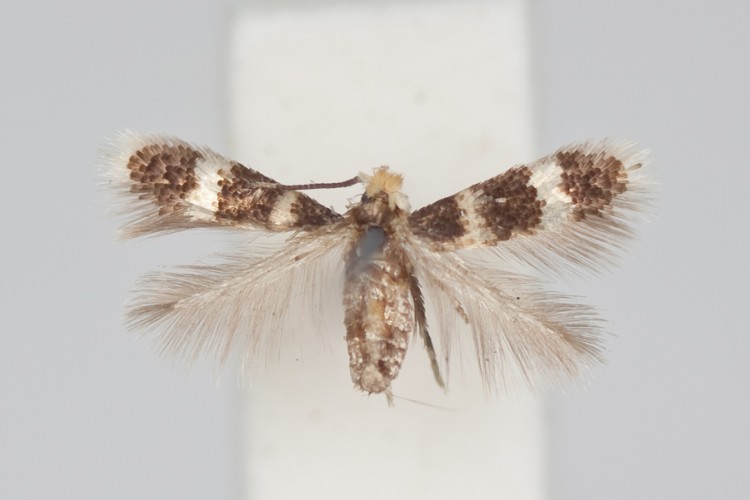 Stigmella diffasciae (Nepticulidae)
Per Chris Grinter, in July 22nd, 2011 Paulo post ultima provocatio GOP consectetur, sed this is a softball. Im 'sperans invenire aptiorem piger imago vellent…

Per Chris Grinter, in July 19th, 2011 Si quid ei Jesus facere vaco – maybe a morbo mederi, DEBELLO, utilis fames non enutriet – sed nah, quisque videt quod adventus. Quid sane, ut in coro – super hoc negotio, a facie tua per Walmart! Saltem, that’s what a couple in South Carolina believe to have found, autem Walmart receipt with Jesus’s face on it. This isn’t exactly new or exciting, humans have a wonderful ability to recognize a face in just about anything. Jesus and other characters “appear” on random things all the time, and even in 2005 a shrine was built to the Virgin Mary around a water stain in a Chicago underpass.
Pareidolia anyone? Lorem ipsum, that face looks pretty convincing, I’m not too sure this wasn’t just faked or “enhanced”. The closeups even look like there are fingerprints all over it. Since I don’t have a walmart anywhere near me or a walmart receipt on hand I can’t determine how sensitive the paper is and how easy it would have been to do – but how long do you think before it shows up on ebay? In omni eventu, it looks much more like James Randi to me than Jesus (at least we actually know what Randi looks like!).
 from CNN
Per Chris Grinter, July 18,, 2011 Erat Arthropoda, conservus SFS Lorem Buddy Michael Bok communis imago in regionem suam, Plugg lignum viride, ranam. Prima cogitatio similis erat arboris ranae uada in Santa Rosa National Park . undique me excepit, Costa Rica. Vanum es dicere,, Costa Rica duplex inhibens habitum incutit omnia quae acturus es. Haec species ranae lactis nota est (Phrynohyas venulosa) pro copia lactea alba toxicus secretiones. Una fabularum primarum Dan Janzen mihi nuntiavit dum essem cum eo in Santa Rosa de hac specie – et accidens oculum terendo cum tenentes eam. Gratanter caecitas et ardenti tantum tempus.
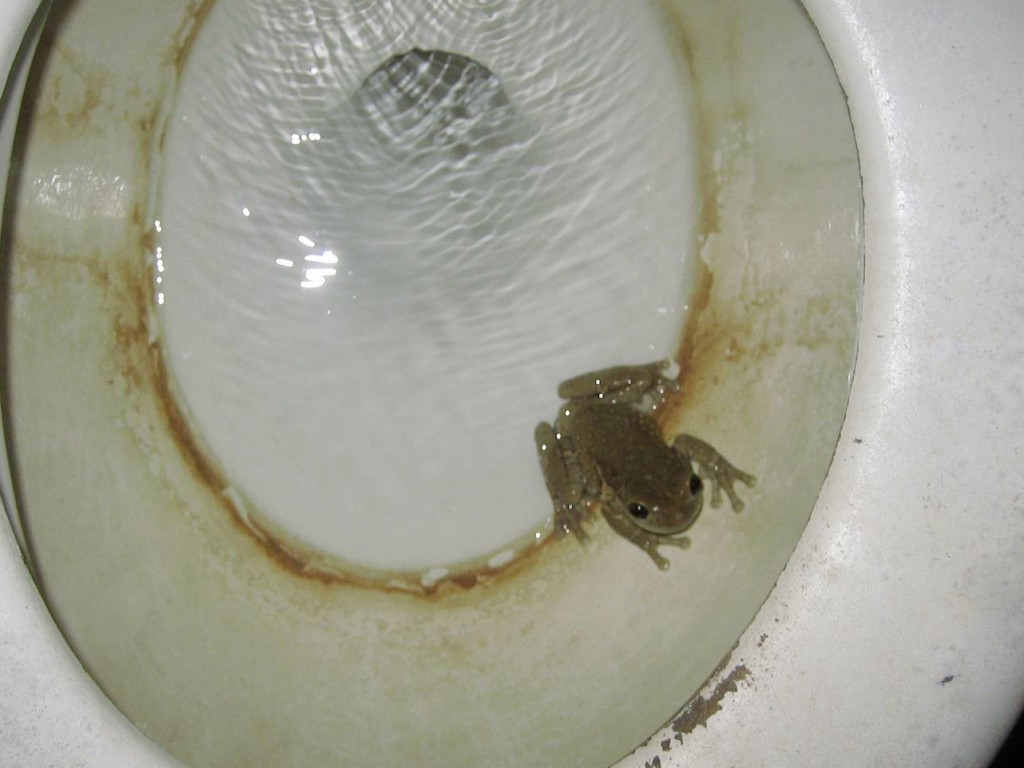 Lac Rana: Phrynohyas venulosa
Per Chris Grinter, July 18,, 2011 I’ll keep the ball rolling with Arctiinae and post a photo today of Ctenucha brunnea. Hoc tinea potest esse commune in via procera gramina beaches a San Francisco LA – licet in his decennis velut a tinea huius numeri sunt declinando habitat in interitum, et in litore herbam incursio (Ammophila Arenaria). But anywhere there are stands of giant ryegrass (Leymus condensatus) you should find dozens of these moths flying in the heat of the day or nectaring on toyon.
 Ctenucha brunnea (Erebidae: Arctiinae)
Per Chris Grinter, July 12, 2011 Quod non tam foeda, ut quia de titulo conieci suggerit, trahere potui quin articulus a Custos. Ego vere reperio hilares offendisti, cum dicit quod scientiarum “stupentibus”, “mens sana”, “abhorrent”, “dubitant”, – In aliud tempus id argumentum opinor… Sed tamen per vere cool butterfly has emerged at the “Sensational Butterflies” exhibit at the British Museum in London – a bilateral gynandromorph! The Guardian reports today that this specimen of Papilio memnon just emerged and is beginning to draw small crowds of visitors. I know I’d love to see one of these alive again – although the zoo situation would take away quite a bit of the excitement. I think the only thing more exciting than seeing one of these live in the field would be to net one myself!
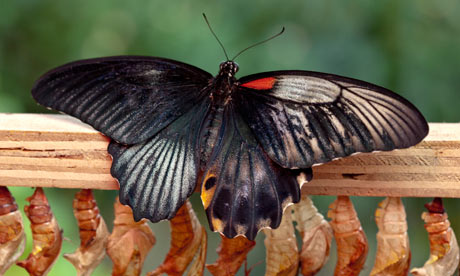
One little thing tripped my skeptical sensors and that is the quote at the end of the article taken from the curator of butterflies, Blanca Huertas. “The gynandromorph butterfly is a fascinating scientific phenomenon, and is the product of complex evolutionary processes. It is fantastic to have discovered one hatching on museum grounds, particularly as they are so rare.”
Euge, I don’t specifically see how these are a “product of … evolutionary processes” inasmuch as omnes life in omnes forms is a product of evolution. These are sterile “glitches” that are cool, but not anything that has been specifically evolved for or against. Perhaps it would be more adept to call this a fascinating process of genetics (which the article actually describes with accuracy). Also – butterflies emerge as adults and hatch as caterpillars – but that’s just me being picky.
Per Chris Grinter, in July 11th, 2011 Prima dies sanies est pulchra et species de rara Eurus turpis et Mexico: Lerina corporatum (Erebidae: Arctiinae). Sicut alia multa praeclare die volans species coloris est, et satis probabile est aposematic. Post omnes,, planta et eruca fortitudo est aeque Suspendisse milkweed (infra).
 Lerina corporatum (Erebidae: Arctiinae)
This image of an old, spread specimen hardly does the animal justice, but one lucky photographer found a female ovipositing at the very top of a hill outside of Tucson, Turpis. While you’re at it go check out some of Philip’s other great photographs on SmugMug.
 Lerina corporatum - Philip Kline, BugGuide As I mentioned above this moth also has an equally impressive caterpillar that feeds on Ascleapias linaria (pineneedle milkweed).
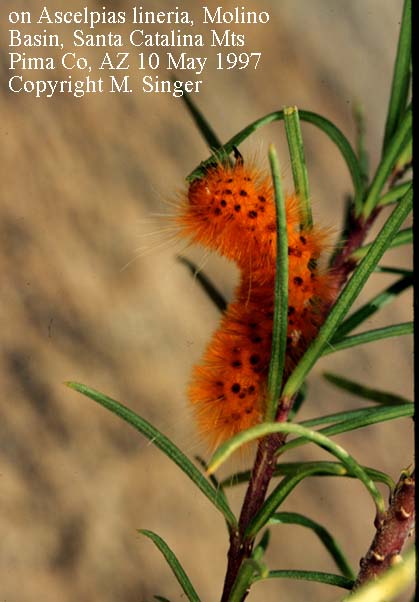
Per Chris Grinter, July 5,, 2011 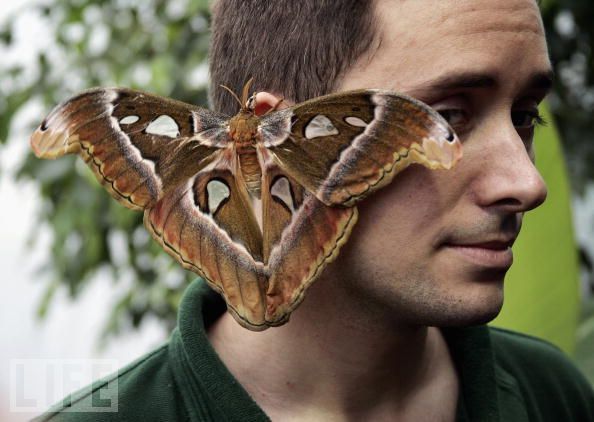
Esse in se est, cum in plus urbana fabulis dormientibus animalia in oculos atque ora repens. Fabula est juxta juvenum clarissima “manducatis 8 araneae annum dormiens“. Etiam leo a numero qui cum google 4 ut VIII… ad libram? Nec mirum haec etiam aucta fama, ut adepto online, praesertim cum de tam popularis arachnophobia. Idque American manducat dubito tota vita sua pauca aranearum; aranearum non tantum domi tot rei, in ore tuo, et tota nocte in finem! Similis fabula fabula, sed tamen granum veri – Earwig profundi estis corde, ut in cerebro, noctu ponere inibi ova,. Non est autem verum quod Earwig humanas opes, (gratanter), sed semper habent inclinatio ad reptant in arta, umidis locis,. Licet hoc accidit saepe satis Vos Olde England hoc nomen adeptus notorium quod earwig. Datum etiam est in memoria mea, ut ear-Cockroaches spelunkers – sed quod aliqua insect crawly ut ambularetis in nos in nocte posset terminus sursum in nostrum foramina,.
Ego autem in aurem dum nescis quae persequi longum serpentia tinea Hoc hodie! EGO coniecto Noctuid confusum quodammodo finita usque in aurem pueri huius, sed tamen non possum non mirari, si ipse faceret… Moths adpulsu homines non solent esse in dormiendo, quod nec etiam sunt obnoxiae ad restingueret squalet, arta loca. Porro autem aliquid est possibile, some do noctuids subire, seu cortice, foliis per diem in abscondito. Etiam arcu another story of an ear-tinea extra UK (honestum est quod non originem singulos dies).
Naturaliter, inertes nonnulli nuntium sources sunt file photos of usura “tinea” Curabitur fabulam imitatus, a primis non. Praesent picturas, quia unus est extra hilares species describuntur tinea anno by Bruce Walsh in Arizona. Lithophane leeae Lorem bis fuerit in meus blog, sed in re numquam!
In operti note est a poem by Robert cient (ubi etiam imago supra inventa).
Recordare: et volabunt in auriculam a tinea
Unus of vulgaris vespere inobservatum deliciis.
Ubi tinea cantat cum alis, omnem ventum
Congrega de terra sua in aures, Rugiemus quasi nihilum
Et audivit. Et obtuli eum discipulis tuis, moti
Caput autem ejus,, habeat uxorem suam in fodere profunda auriculam
With a tip-Q, ad vocem loquelæ, sed quod non esset requies.
Videtur quod omnia ostia ac fenestras
Domus eius fermentum at once-
Quo casu ludus alieni
Numquam control, sed quod posse idcirco excludere
Usque ad vesperam, quasi iam evanuerunt
Neque enim mansi eam. Nec iam corpus eius
Videtur his own; clamores simul horrendos in dolore madet
De vento inside aurem suam, et maledixerit Deo suo,,
Who, hours ago, fuit, benigna a generalissimis
Ibat in mundo satis.
Cumque esset in itinere in hospitali, uxor sistit
The car, Narrat viro suo ut de,
Ut sit in herba. Non sunt car luminibus,
No streetlights, nulla luna. Suscipit illa
A, a flashlight globus compartment
Et tenet et ad auriculam suam, incredibiliter,
Quae tendit in lucem tinea. Oculi eius
Rigant. Sentit quasi peregrinus ille repente
De improviso litore terrarum.
Quando autem ierit ad herba, virilis indoles puerum negat
Apud eundem,. Uxor eius cum flashlight irradiationem
Silentium in caelo, sed solum in
Qui nunquam audierat, et in parva via
Tenebrisque ire alicubi numquam.
- Robert cient, COMMUNIS: Poems (Lee Fort: CavanKerry Press, 2006), 29-30.
Per Chris Grinter, on June 30th, 2011 
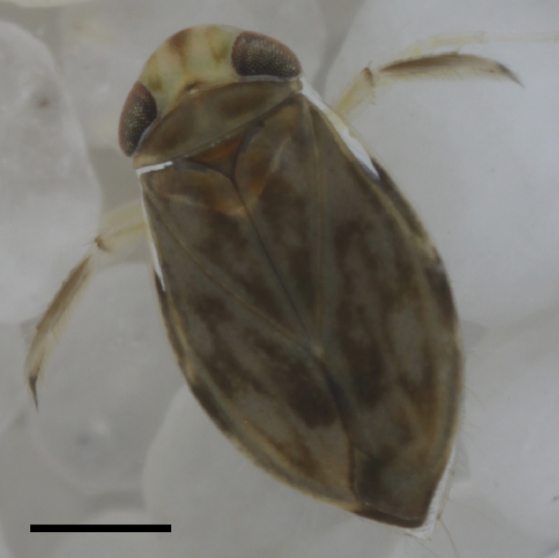 Micronecta scholtzi The hills of the European countryside are alive in the chorus of amorous, screaming, male aquatic bugs. The little insect above, Micronecta scholtzi (Corixidae), measures in at a whopping 2.3mm and yet produces a clicking/buzzing sound easily audible to the human ear above the water surface. To put that in perspective: trying to hear someone talk underwater while standing poolside is nearly impossible, yet this minute insect generates a click loud enough to be mistaken for a terrestrial arthropod. While that doesn’t sound too impressive when we are surrounded by other loud insects like the cicada, M. scholtzi turns out to be a stunningly loud animal when you take into consideration the body size and medium the sound is propagating through to reach our ear. Put into numbers the intensity of the clicks underwater can reach up to 100 dB (Sound Pressure Level, SPL). Shrink us into the insect world and this sound production is equal to a jackhammer at the same distance! So what on earth has allowed this little bug to make this noise and get away with it in a world full of predators?
The authors naturally point out how surprising these results are. The first thing that becomes apparent is that the water boatmen must have no auditory predators since they are basically swimming around making the most noise physically possible for any small animal anywhere. Really this isn’t too surprising since most underwater predators are strictly visual hunters (dragonfly larvae, water bugs and beetles etc…). It is very likely that sexual selection has guided the development of these stridulatory calls into such astounding levels. The second most surprising thing is clear once you graph just how loud these insects are relative to their body size. At the top of the graph is the bottlenose dolphin (T. truncatus) with its famous sonar. But the greatest outlier is actually our little insect in the bottom left with the very highest ratio between sound and body size (31.5 with a mean of 6.9). No other known animal comes close. It is likely though that further examination of other aquatic insects may yield similar if not more surprising results!
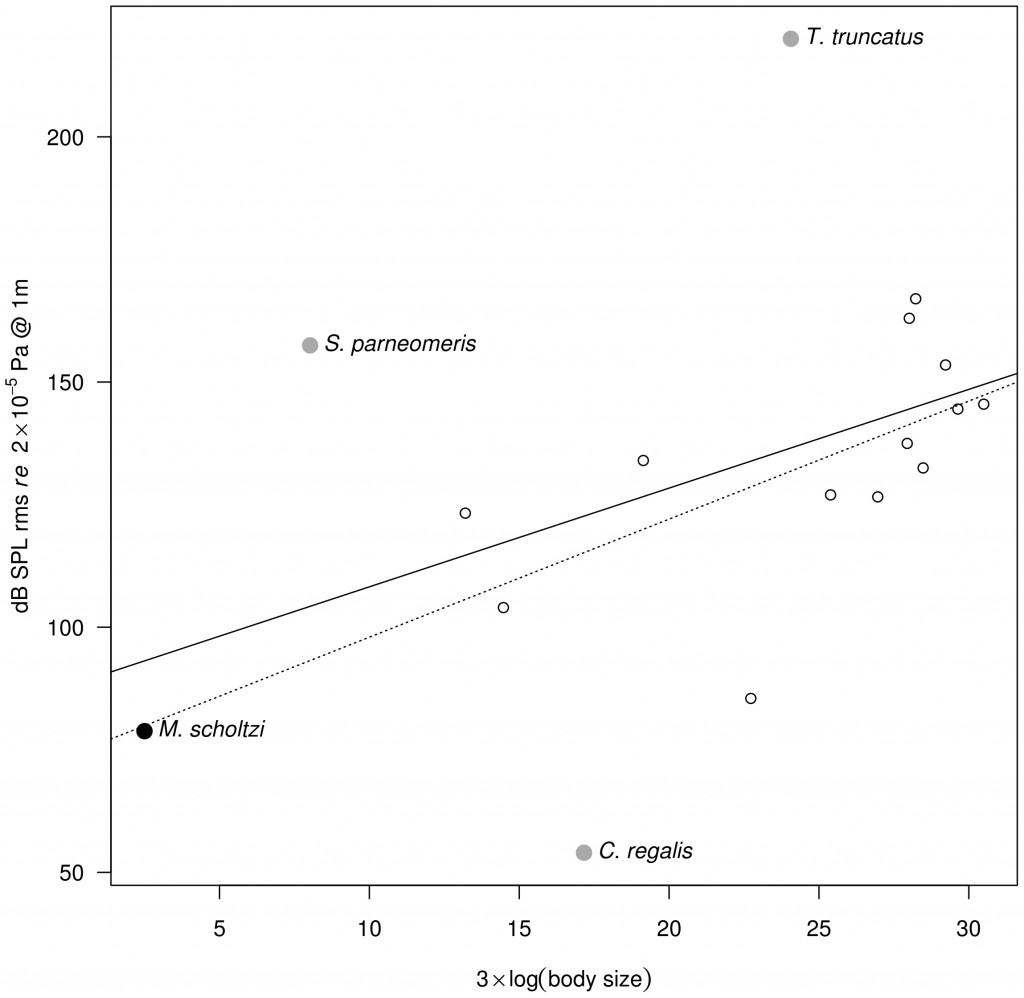
To be more accurate about the “screaming”, the bugs (bugs in this instance is correct; the Corixidae belong to the order Hemiptera – the true bugs) are likely to be stridulating – rubbing together two parts to generate sound instead of exhaling air, drumming, etc.… In the article the authors speculate that the “sound is produced by rubbing a pars stridens on the right paramere (genitalia appendage) against a ridge on the left lobe of the eighth abdominal segment [15]”. Without pulling up their citation, it appears that stridulation by males in the genus is well documented for mate attraction. And as you would expect, news outlets and science journalists read “genitalia appendage” and translate that to penis: and you end up with stories like this. The function of the parameres can be loosely translated to similar to mandibles in that they are opposing structures (usually armed with hairs) for grasping. In exact use of them may differ by species or even orders, but they are very distinct form the penis (=aedeagus) since they simply help facilitate mating and don’t deliver any sperm. So in reality you have genital “claspers” with a “pars stridens”. And the best illustration of a pars stridens is over on the old blog Archetype. This structure is highlighted below in yellow (and happens to exist on the abdomen of the ant). But in short – it’s a regular grooved surface akin to a washboard. In the end the sentence quoted above should be translated to “two structures at the tip of the abdomen that rub together like two fingers snapping”.
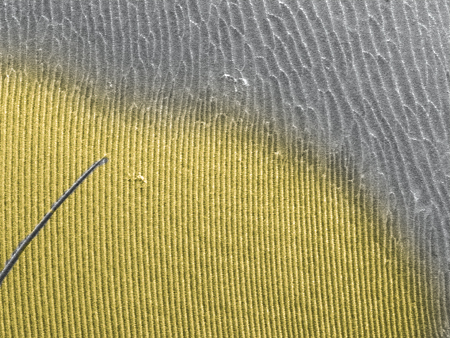 Detail of the pars stridens (in yellow) on the forth abdominal tergite in a Pachycondyla villosa worker (Scanning Electron Micrograph, Roberto Keller/AMNH) Continue reading The incredibly loud world of bug sex
Per Chris Grinter, die 20 mensis Iunii, 2011 Ego cum ista series et pila conantur plus iusto volvens. Et de singulis hebdomadis ingens dolor collectis quatenus hic novae Academiae Scientiarum ad California. Hoc mihi edem… Saltem pauci centum annos,.
 Grammia edwardsii (Erebidae: Arctiinae) Specimen huius hebdomadis est tigris tinea Grammia edwardsii. Usque ad paucos annos haec familia tinearum a Noctuidarum familia habita est – sed recens analysis hypothetica et morphologica demonstrat reapse Noctuid. Familia Erebidae intra Noctuidas et Arctiidas evulsa est, vertere in familiam Arctiinae. Bene odiosis genus de modo – omnia in omnibus, tinea pulchra est et fere nihil notum est. Hoc specimen in San Francisco in 1904 – etenim omnia fere specimina huius speciei nota in urbe circa vicem saeculi collecta sunt. Dum haec tinea simillima est iis quae abundat et diffunditur Ornata Grammy, prope analysi oculorum, cornus figura et antennis dicunt hoc esse in actu species separatas. Specimen ultimum credo circa annum 1920 collectum esse et ex eo non visum est. Verisimile est et infortunatum, ut haec tinea ultimo cursu exstinguatur 100 annis evolutionis SF regione Bay. Grammia, et Arctiinae in genere, non notum est summus gradus exercitum proprietatem; tendunt ad esse sicut vaccae parvae, et fere omni via pascuntur. Pergit igitur sollicitare cur haec tinea hodie habitat, et in civitate tam graviter commotus. Fortasse haec tinea propria est in locis palustribus salsis ambientibus sinus – quae omnia abstersa ob landfill pro real-estate (1/3 totius sinus ad replendum perierat). Vel fortasse haec tinea apud nos etiam hodie manet sed numquam colligitur quia species volatilis dies est. Semper custodiunt oculi mei sunt in parco vere in parva orange LABES…
|
Scepticismo
|














